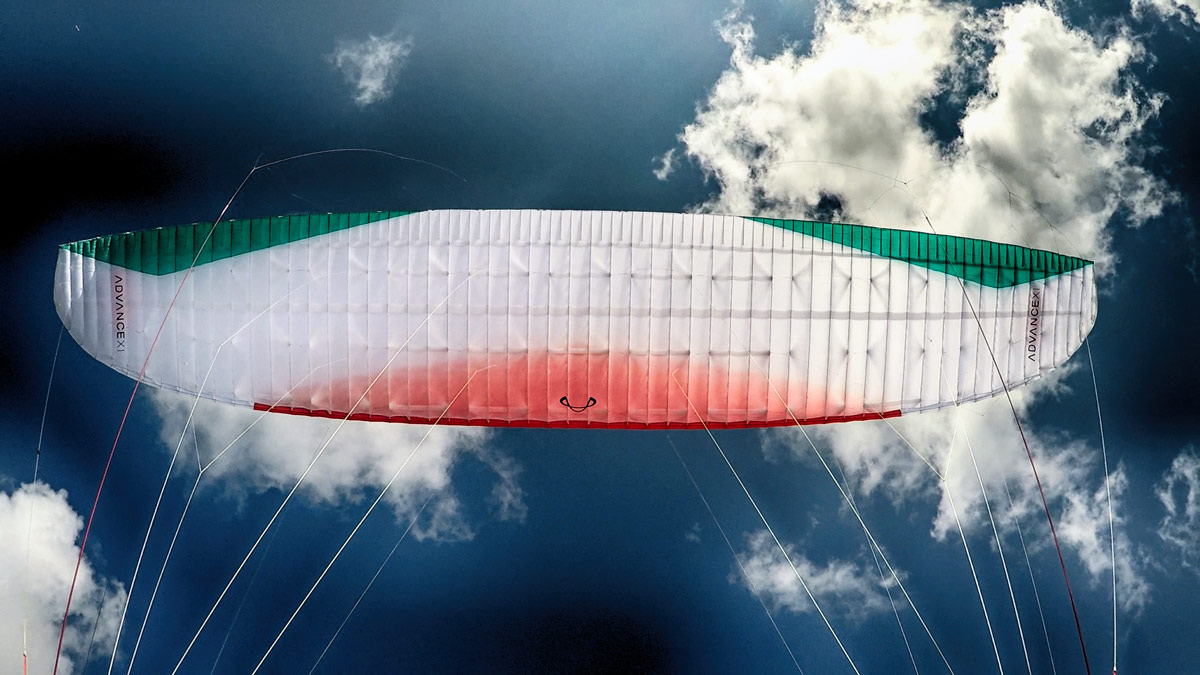
The Advance XI is an ultralight paraglider for pilots who want to explore. Does this extremely compact wing retain the safety of its sibling, the IOTA 2 (EN-B)? What is the XI's character in the air? We examine the new ‘performance-intermediate' designed for bivouac flying, hike & XC tours, travelling or discovering new routes in remote regions.
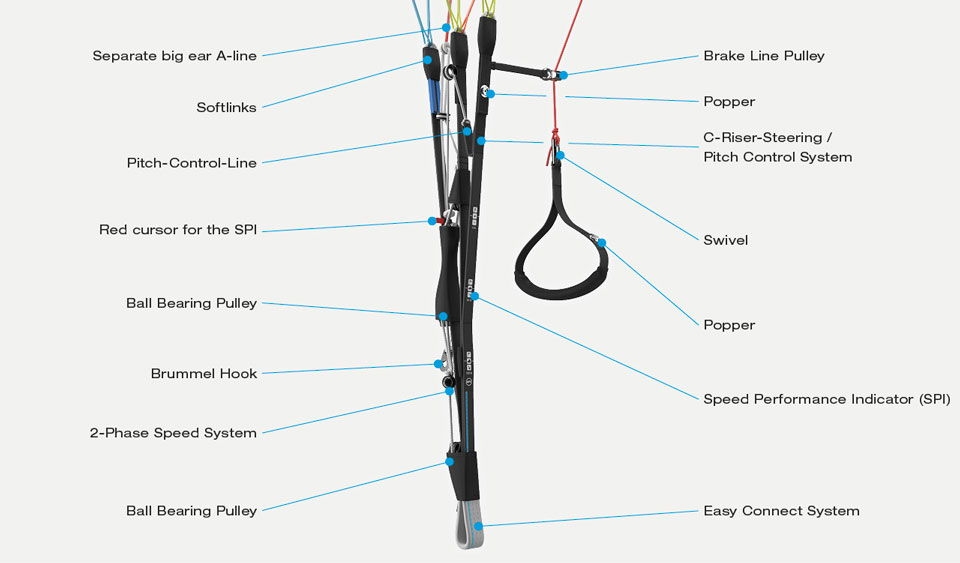
Advance XI: Construction
As with all things Advance, the construction is superb. You might be concerned about the unsheathed lines but they are treated with a protective coating, and thicker than the core of similar-sized sheathed lines. Advance says: “Our experience shows that paragliders fully lined with Edelrid Magix Pro do not require retrimming for very long periods. Original flying characteristics are retained even after much intensive use”.
In an effort to reduce weight, the usual mini-maillons you see at the top of the risers have been replaced with loops of Dyneema (like most ultralight wings). In practice, I prefer maillons which are easier to work with, especially when trimming a wing or doing line repairs. Then again, the dyneema links are stronger, lighter, and can't accidentally twist open.
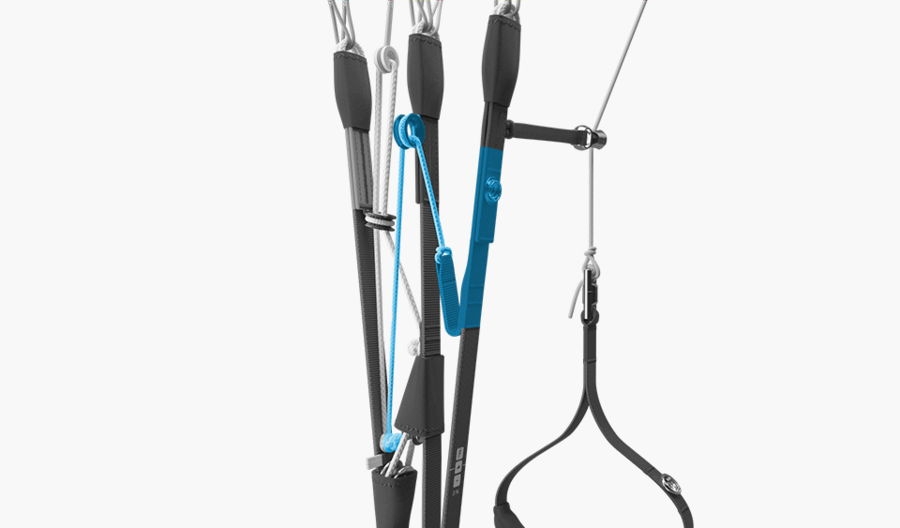
The XI features the pitch control system from the Iota 2 that connects the C's to the A's via a pulley on the B's, which helps you stay in contact with the wing and control pitch smoothly during accelerated flight. It's simple and easy to use, but take care to grab well above the pulley if you're considering doing a B-line stall.
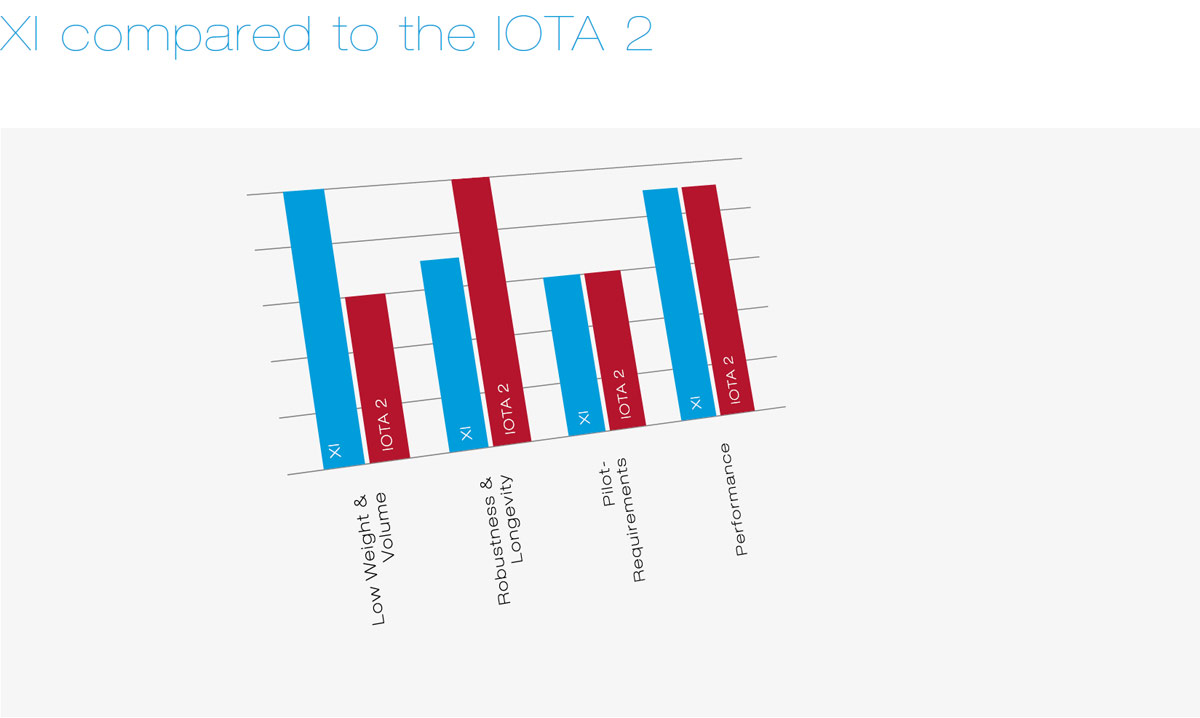
Compared to the Iota 2, most of the technical specs are identical, except for the reduced line set, the marginally reduced cell count, modified internal reinforcing and the mix of fabrics which takes 1kg off the weight. You'd be forgiven for thinking this is just the Iota 2 ‘light', but it seems to have a different character in the air, just a little bit more mellow in response to the longer brake travel and slightly less direct. The reduced line consumption should slightly improve glide efficiency, although Advance only claim that it is equal to the Iota 2.
It is noticeably more compact when packing away.
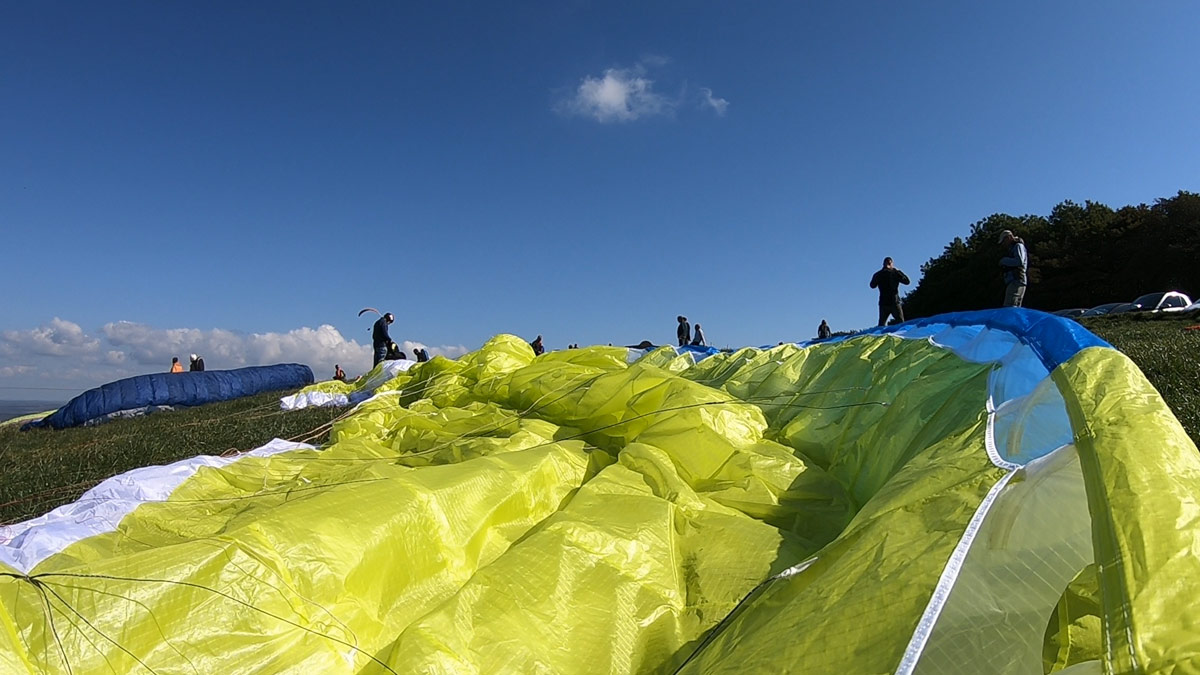
Advance XI: on the ground
It floats up easily in nil wind, and is easy to keep overhead, with a slight tendency to pull forward – it wants to fly. It is tolerant of deep brakes on the ground and will tend to rise from the mid-point, or settle slowly back to ground when down low. No-handed launching is easy (lean back, no need to touch the A's). This would be my preferred method in stronger wind as it induces less shooting, and means you can stay on the rear risers (C's) to pin the light and fluttery wing down until the last moment.
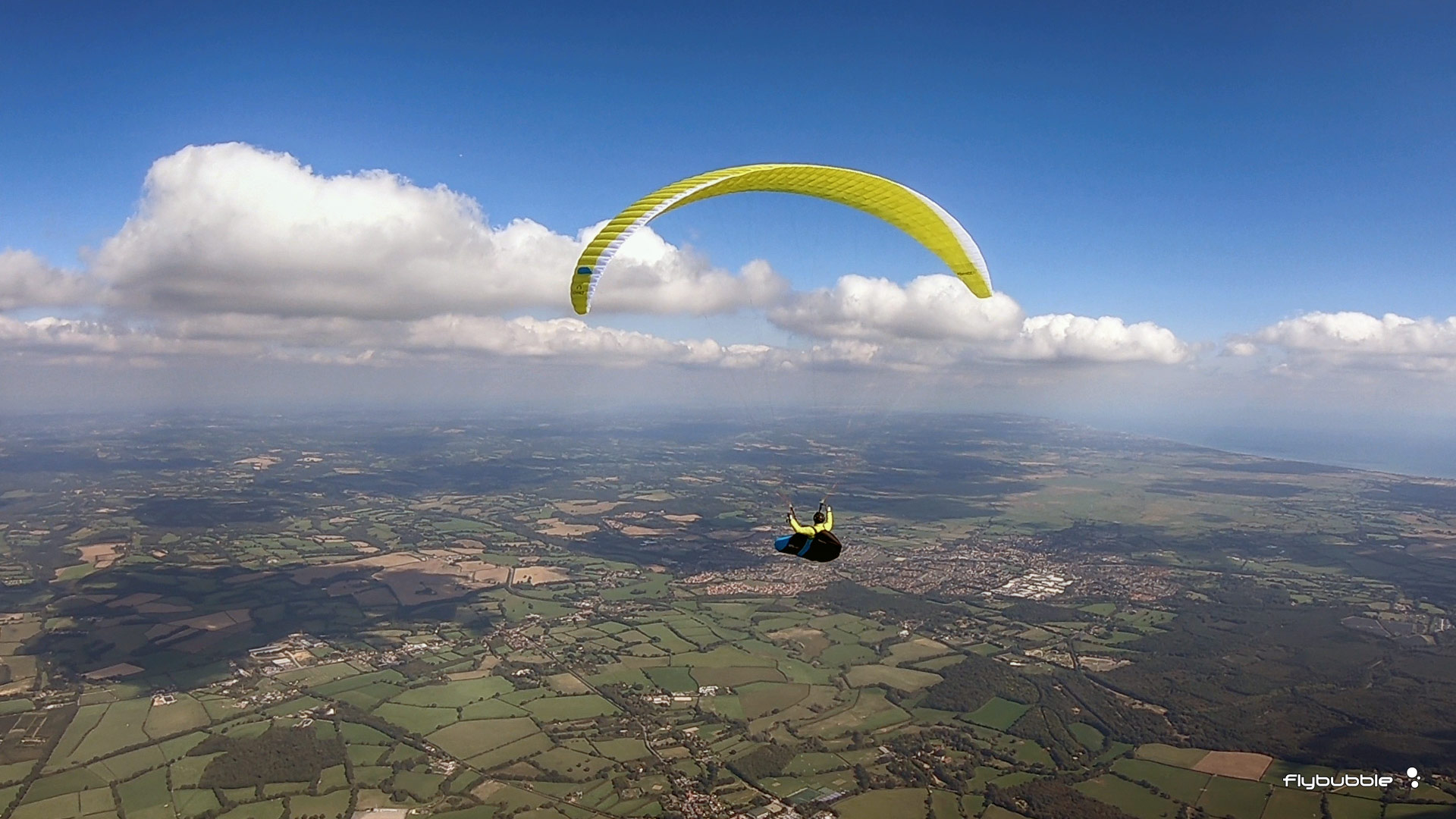
Advance XI: in the air
It is very pitch stable and easy to thermal. It has a low-aspect feel: you can turn fairly quickly. It feels compact, although you need a fairly long pull on brakes to get tight turns. During XC this can be a little tiring, but the turn is nicely balanced and smooth. You can lean into it to get the tighter turns. For gentler turns a smooth pull gives you a moderate response and a good turn radius.
The XI's forgiving nature makes it very accessible. You can pull quite a bit in the corners and not risk spinning. You can hang on the brakes by mistake and not risk stalling. It has great stall resistance and the entry to stall is smooth and slow and gentle, so great for toplanding and slopelanding in odd places.
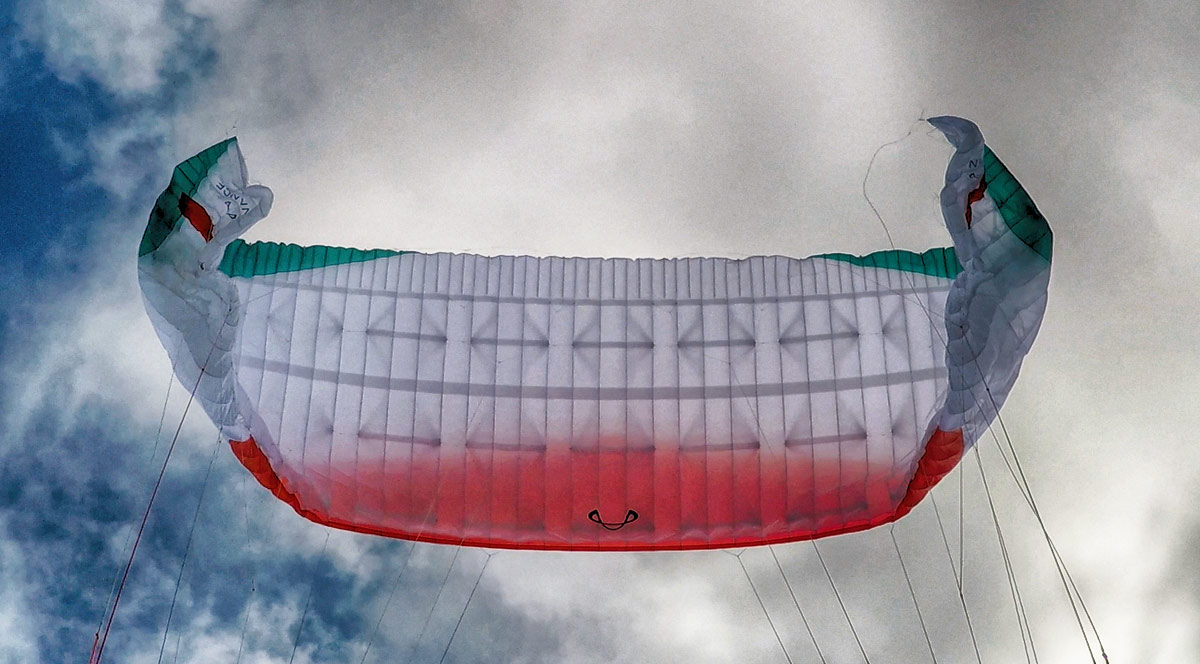
Big ears are easy to induce. They flutter, but are stable, and they reinflate on their own in a relaxed manner. It doesn't have a lot of energy in collapses and manoeuvres, continuing with a calm and constant glide.
Ultralight wings generally have less resistance to turbulence perhaps due to reduced reinforcing or wing inertia. I had a few small asymmetrics in rough air, but the lightness of the wing meant it was quicker to come back out and get on with flying.

Advance XI: Comparisons
The XI favours stronger conditions, where it will give you confidence through the passive stability. When the thermals are broken up, light, and difficult to core, I didn't feel the XI was at its best. I didn't have the same sense of the air as on the Iota 2 or Sigma 10, which excel in both weak and strong conditions due to snappier responses and taut feel.
The XI is more suited to pilots who enjoy a calming wing. I think it's less direct and responsive than the Iota 2, requiring more brake travel for big turns. This makes it very accessible, and suited to tired pilots on big adventures, as the pilot demands are somewhere around the middle of the EN B class. It's an easy recommend for the majority of pilots.
On the second XC flight I was heavily loaded on the Ozone Rush 5 with Carlo mid-weight on a larger sized Advance XI, and the difference in trim speed was noticeable - the XI pulled away. He had to slow down or do big ears to stay in the shot. So it's impressive on glide despite being ultralight. Whereas the Rush had a robust feeling, the XI requires more active management. This is true of all ultralight wings.
The XI was matched with the Supair Step on climbs, and was too close on glide at trim speed to call a winner. Don't read too much into one-off one-size comparisons ... all this suggests to me that the XI is highly competitive in its class and you're best to focus on other aspects of the wing to make your decision.
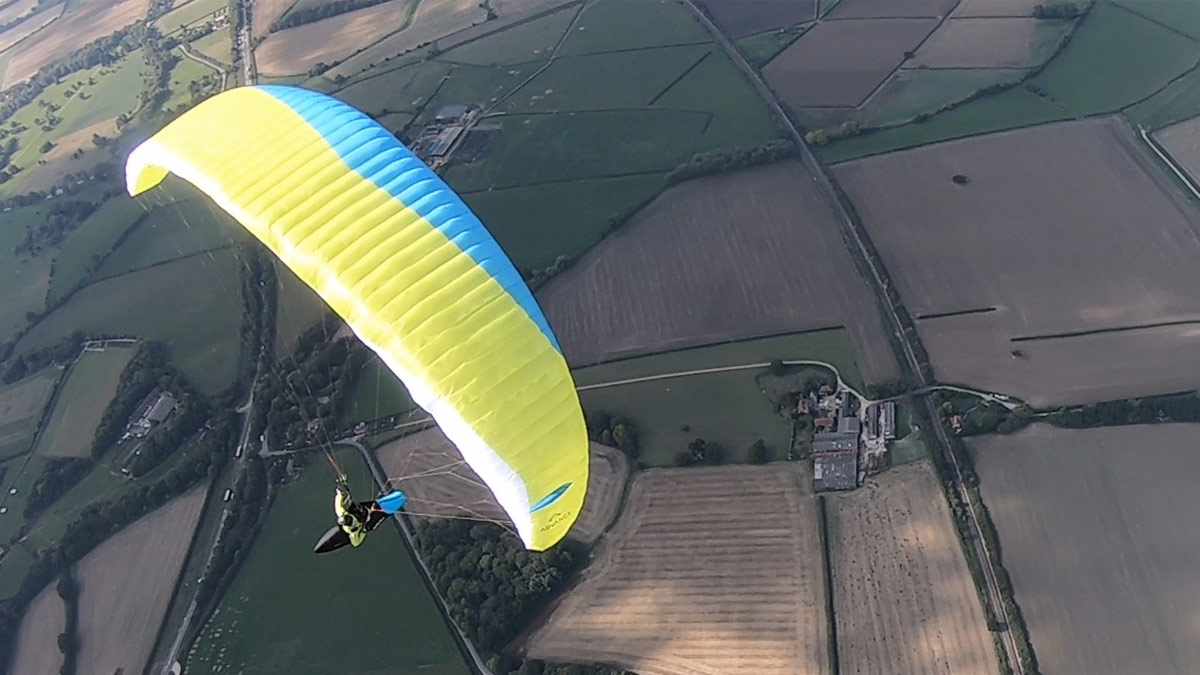
Advance XI: Who is it for?
The XI appeals to many paraglider pilot groups. For a light 'high B' wing there's nothing 'hot' about the XI. It's very settled and accessible to a broad range of pilots. Those with some experience on a low B (Progression Class) wing will find the XI presents no big challenge, but certainly boosts performance. Pilots already flying a standard-weight high B (XC Class) wing will appreciate its light weight and compactness for travelling.
Experienced pilots will have noticed that the demands of a hotter wing often don't produce the expected performance advantages in the real world, especially when flying in big mountains. The higher glider performance is lost due to the stress-induced lower pilot performance. Flying a less demanding, slightly lower performing wing often translates into better-than-expected real world performance. The XI offers experienced pilots steady calm results due to its relatively high trim speed combined with good glide and good accelerated efficiency. For serious 'deep mountain' adventuring the XI's added security will be most welcome for all but the most brave and ambitious.
In summary, the XI is very easy to launch, simple and pleasant to fly, and performs very well. It offers everything most keen, fun-loving cross country hike-and-fly pilots could want, and really need.
Find out more about the Advance XI
Not sure if this is the right and best wing for you? Check out our unique Flybubble MATCH service
Advance XI: Review video
Enjoy the short film!
Brought to you by Flybubble
Like what we do? The best way to thank and support us is to buy gear from us and recommend us to others. Review our service on Trustpilot and our products on Flybubble Shop. You can also subscribe to Flybubble Patreon. Thank you!

